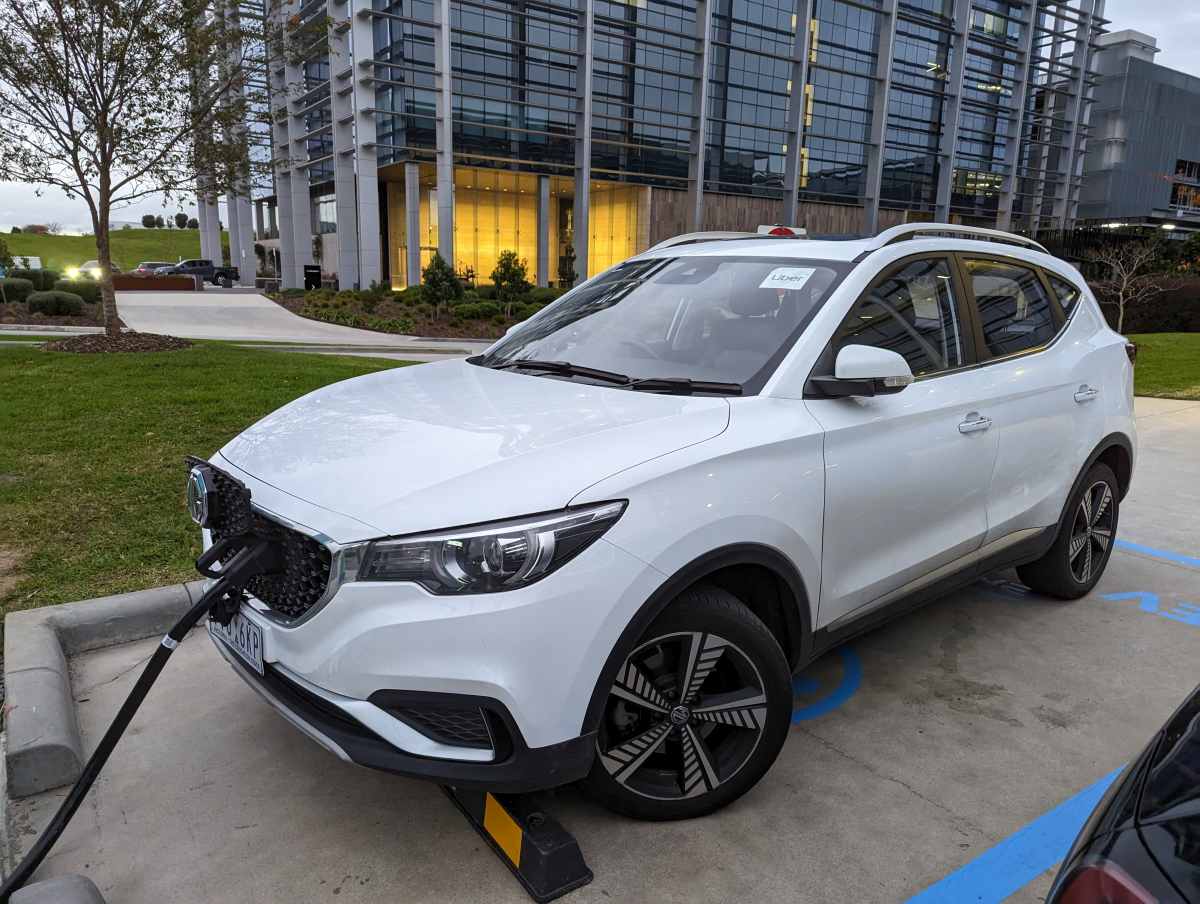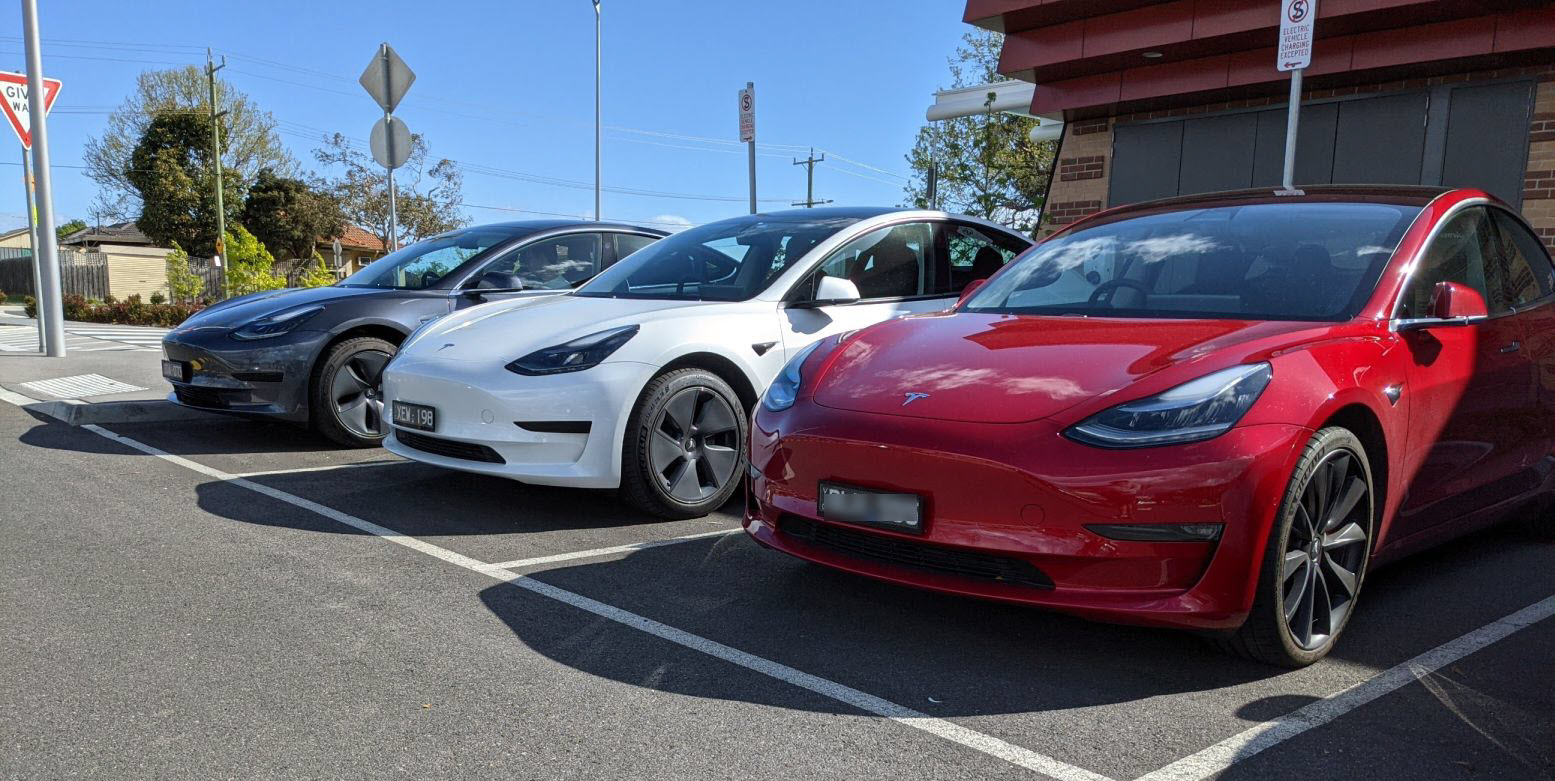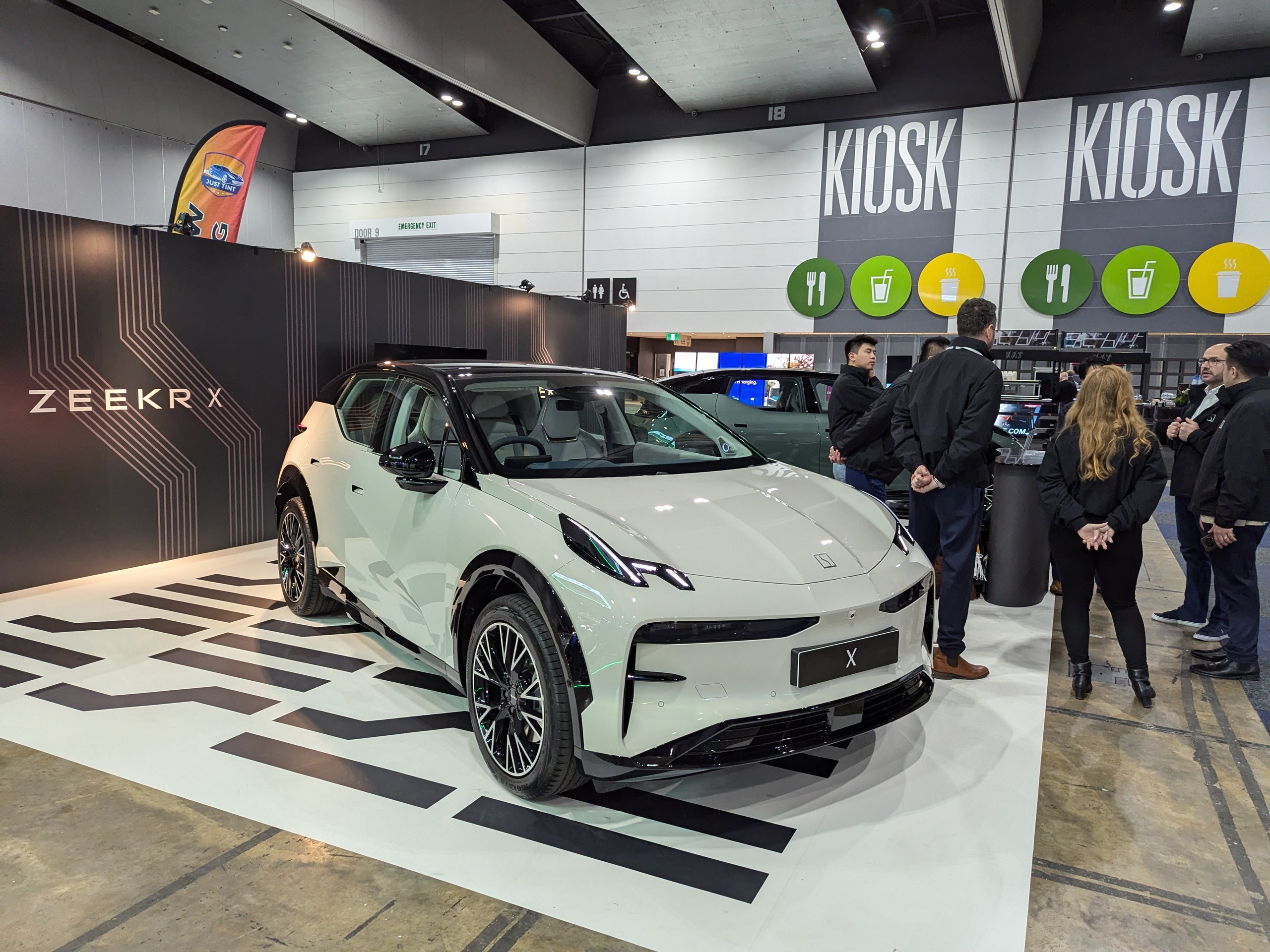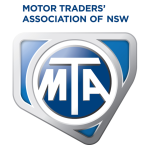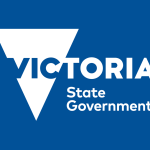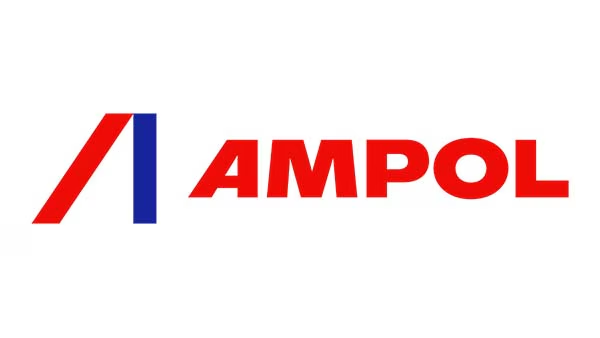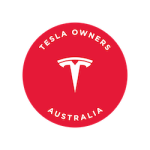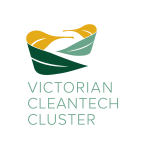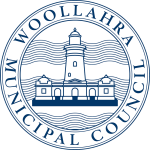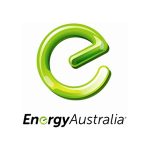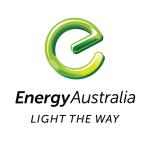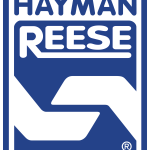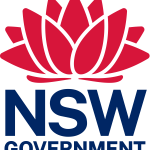This weeks episode discusses Zeekr vehicle pricing and reviews the Polestar 3.
Transcript
Welcome to EV Loop powered by CarLoop. I’m Adrian Maidment, and I’m Riz, your host. This episode: a new EV driven, Zeekr pricing, bigger diggers are back, vote Tesla, and chart of the week. What will the chart be?
Adrian: Hello Riz.
Riz: Hey Adrian, good to be on.
Adrian: Yep, yep, it’s good for another episode. We’ve cracked 10 episodes now. Woohoo, so please, anyone listening and watching, like, subscribe, and to end the loop of EVs.
Riz: That’s clever. Where did you just come up with that? “Bring in the loop”?
Adrian: Just now.
Riz: Genius, genius. That’s why you’re the host.
Adrian: First up, what have you been driving?
Riz: Look, I’ve been driving a few things, but the most prominent in the last couple of weeks has been the Polestar 3. I got a chance to be on the launch down in Tasmania and did a couple of hundred kilometres in the car. I’m very impressed by how the car drives, given it’s a large luxury SUV, how it handles the roads, the steering feedback, dynamic driving on curvy roads—it does it very well. You don’t feel the mass of the car. It weighs 2.6 tonnes, but with that big 111 kilowatt-hour battery pack and the dual-motor configuration that we had in standard and performance versions, yeah, it just does such a good job. I can see Polestar selling quite a few of them in that luxury segment and converting a few owners and drivers who would consider a BMW X5 or a Mercedes GLE to try something electric. Yeah, it’s a very compelling product.
Adrian: Yeah, I thought it’s, you know, obviously it’s a lot of money, but it does have that premium feel about it, which you are looking for. You’re not wondering where the money’s going, kind of thing. And they’ve got a bit of a focus on the sustainability front as well. So, you know, people that are conscious of that—these cars are not going to be driven on racetracks. They’d be driven around wealthier parts of Australia and New Zealand, mainly inner suburbs. So, yeah, replacing Range Rovers, I think this car can. Okay. Anything else you’ve been driving?
Riz: Had a chance to test drive and be a passenger in an Xpeng G6 in the last week or so. Can’t wait for the pricing of that car to come out, which hopefully will be by the time this episode goes up—it might be up. So yeah, it’s quite a compelling car in terms of an electric SUV. Let’s see if they can price it right and how it will then compete with some of the other new entrants such as Zeekr, which we might touch on soon.
Adrian: I think we’ll touch on it right now, since we’re talking pricing. Zeekr pricing is out.
Riz: Yeah, so Zeekr X, which is the first product electric SUV, sort of a smallish SUV in the market, starting at $56,900 for the single motor version, and that bumps up to $64,900 before on-roads for the top spec dual motor version as well. The dual motor version 0-100 in under 4 seconds, pretty good in person. Also premium materials being used. I think slightly more premium than the Volvo EX30 as well. But if you’re in the market for them, worth test driving both. So yeah, pretty good price, and there’s a special on if you place an order before the end of October—you are likely to receive one year’s worth of free DC charging as well as the supply and installation of an AC charger at your home. So I see a fair few new brands starting to do that as well, which is a good thing. It gives new buyers a bit of assurance when they’re buying an electric car for the first time.
Adrian: You think that pricing sort of feels about right?
Riz: I think so. It’s lower than what was expected. At the pre-launch a couple of weeks ago in Sydney, they mentioned the entry-level model will be under $59,000. So it’s come quite a bit under that, and the dual motor was going to be under $69,000. So it’s come quite a bit under that as well. I think for the current market conditions, the pricing is round about right, but we’ll see as there’s more competition what they do to the price itself.
Adrian: Okay, we’ll move on to—my notes here say AFL-Footy Grand Final Victoria. Why are we talking Footy, Riz?
Riz: Well, clearly, firstly, congratulations to the Brisbane Lions for winning the Grand Final. We had, for once, two non-Victorian teams in this. But the reason why we’re talking about this, Adrian, is not so much about the footy itself, although we have some die-hard fan listeners of this programme. It’s because of the sponsor Toyota. Now we know Toyota has not had a battery electric vehicle in the market until they brought the bZ4X to Australia, and it hasn’t sold in a huge amount of units, which means they are struggling a bit when it comes to bringing full electric models. Now, why I thought it’d be interesting to talk about this, apart from the fact that we’ve just had the grand final, is Toyota is the main sponsor for AFL.
At the grand final sort of post-game ceremony, they had a couple of Hilux’s there on show, and they’re starting to talk a lot about sort of cleaner—I think with the way the market is going, they either have to bring more vehicles that are cleaner and actually cleaner than, you know, Hiluxs and others that are currently not even available as plug-in hybrids. So Toyota has a bit of work to do, but I think as viewers of sports like the AFL, we have to sort of expect sponsorships to those big leagues by companies that are doing the right thing when it comes to bringing the right amount of electric vehicles into our market. And that’s better for our cities as well. So Toyota, if you’re listening, try and get a few more electric vehicles into the Australian market because the bZ4X just isn’t going to cut it.
Adrian: I guess you could say Kia, the tennis, that was a good example, wasn’t it?
Riz: Yeah, that’s right. At the Australian Open, Kia had quite a few EV9s, and they used the opportunity to launch that three-row SUV. Yeah, a bit of a contrast there between Kia and Toyota sponsoring major leagues, but we need more brands that are going to be bringing electric vehicles into the market to be part of that race as well.
Adrian: Tesla—it’s not a rumours section, it’s just a Tesla story. It’s about the—you can vote for a Tesla charger. What does that mean, Riz? I can vote for a charger?
Riz: Well, it’s a bit different to the US, Australia, or New Zealand election where you’re not voting for an individual or a group of people that may or may not hold the future to our countries. It’s more voting for where, as EV drivers, you would like to see the next Supercharger sites. So Tesla, for the last couple of years, have started to ask the community, Tesla owners as well as EV drivers, on where they think is a good location for a Tesla Supercharger. This time around, voting is opened again for Spring 2024 in Australia. So people can log into the Tesla Supercharger voting platform and vote for locations in the Asia Pacific that they’re interested in, that they think it would be good to have a charger out there. And that will help Tesla make a decision, and then they’ll pick a winner at the end of this voting round. And hopefully, it means that that winner is where a location will be in the next couple of months. So anyone that’s interested, there are a few locations in Australia as well as obviously in the Asia Pacific region—there’s South Korea, Japan, and others as well. But yeah, pick any of those top five locations that you feel is appropriate, or if you think the location you would like a supercharger site on and it’s not there, suggest one. So I think it’s a good initiative. It’s good to get the EV community involved. Surely the community has an idea of where they would like to see chargers, and yeah, getting everyone involved by having to vote—I think it’s a good creative, fun way of rolling out more charging infrastructure where it’s needed most.
Adrian: It’s not just for Tesla owners, is it? You can also…
Riz: No, you just need a Tesla account. You can create an account as a non-Tesla driver as well. And then log in, and you’ll be able to see where those sites are that are currently selected or suggest a new one even as a non-Tesla owner.
Adrian: Right, we’ve talked big diggers. This was an article in The Driven. We’ve talked about these before, but this was that the Fortescue Metals grabbed some headlines this week. They’re investing $4 billion. Is that right? $4 billion for giant electric haul trucks, electric dozers, and electric excavators, but they’ve also got a very fast charging system. Capacity of six megawatts.
Riz: Yeah. So Fortescue Metals Group is one of the bigger mining companies, not only in Australia but globally, particularly when it comes to iron ore mining that’s used to make steel. They’re run by a gentleman named Andrew Forrest. He’s been involved with mining for a while but also is looking into more renewable and cleaner energy projects on the side when he has some free time, and obviously, this company has some pretty strict goals to get to net-zero emissions fairly quickly, more aggressive than most other large corporates in that mining sector. So they’re putting their money where their mouth is and going out there and buying some of the, you know, big electric diggers, also and dump trucks, but also doing a lot of designing and engineering in-house on how they’ll be able to charge them and operate them on their sites. So great initiative. It goes to show that, you know, not only passenger cars but all the way up to big diggers and dump trucks will be electric in the future, and they’re basically saying to other mining companies, “Hey, the future is now, so get a move on.” So good for them to be able to get out there and actually take a stand, and now they’re going to get this equipment in and show people that it can be done. Four billion dollars—it’s chump change in the mining sector, Adrian. It’s literally pocket money.
Adrian: Wow. Okay. Pocket money. And actually, just on the back of that, I believe their future projects will involve electrifying those heavy haulage trains that run between the mine sites and the ports. So let’s watch this space.
Riz: Wow.
Adrian: Okay. Let’s move on to chart of the week. What do you got for us this week, Riz, for chart of the week?
Riz: So yeah, this week we’re looking at basically EV sales in Australia. What has happened in the first eight months? I thought it would be good to sort of take some stock when it comes to electric vehicles. And as far as we know, adoption has continued to increase. So far, we have sold over 63,540 vehicles, fully electric, in the first eight months of the year. There’s been a lot of discussion around how, you know, EV sales are plummeting and things are dropping and all of this sort of stuff, and I just wanted to put things into perspective. We are ahead of where we were last year when it comes to EV sales.
Over the last couple of months, there’s been a little bit of a slowdown, but that’s just the way the economy is at the moment. But what that’s doing is encouraging manufacturers like MG and others—we’ve seen some previous price cuts, and we’ll probably see more price cuts that will make EVs even more affordable for people. So electric vehicles, although the new car sales data doesn’t always show the huge increase that people are expecting, it clearly shows that the market is maturing, and a lot of manufacturers and others are starting to basically bring their prices down, encouraging more consumers as we get into the fourth quarter of this year. So more sales than last year for EVs, and things—I think with the number of new models like some of the ones that we’ve spoken about already today, like the Zeekr X—sales are likely to continue going up from where they have been. So it’s exciting times ahead in 2024, especially the last quarter.
Adrian: Let’s move on to any owner thoughts—owner thoughts you’ve picked up on in the last week.
Riz: Yeah. So I’ve been speaking to, you know, various different owners and also keeping an eye out on YouTube and other places to see what owners are saying about new electric vehicles. And I thought this week we’ll do something a little bit different and have a look at what plug-in hybrid owners are saying because the last time we touched on the fact that BYD Sealion 6, which is a plug-in hybrid electric SUV, has outsold all three of their fully electric models in the month of August, which is their Atto 3, the Dolphin, and the Seal. So, Sealion6, a couple of owners have had them for, you know, just over a month now, and one of them—I came across their channel on YouTube where they were going through how they’re now using the plug-in hybrid vehicle in its hybrid electric vehicle mode, HEV mode, and I was just curious to know, hey, how does that operate?
What happens to its fuel consumption? And after having a battery electric-only range of around about 70 to 80 kilometres in the real world, it switches to hybrid electric mode where fuel economy can be, well, in that particular owner’s experience, was as high as 6.1 litres per hundred kilometres, which is sort of expected from a vehicle that is, you know, like a mid-sized SUV. So the moral of the story is, it’s probably better to drive it on pure electric mode as much as possible and maybe charging it every night is the way to go because most people’s commutes are under 60 kilometres a day. So if you can get that out of a plug-in hybrid vehicle like the Sealion6, then it’s great. Otherwise, you might need a slightly bigger battery to increase that range so that you’re not consuming six litres every hundred kilometres.
Adrian: And we’ll put a link to that video below if we have it. We got a link to that video?
Riz: Yes. We’ll put a link to that video in the description.
Adrian: International news. My good friend, the Tesla Robotaxi. Got to read another article this week. Apparently, Elon Musk has said—drum roll—one for the history books.
Riz: One for the history books. It’s probably the most important vehicle unveil that Tesla’s had in years. We’ve seen them with the Model Y after they launched the Model 3. We also then saw the Tesla Semi truck. We’ve seen the Tesla Cybertruck. Now it’s the robotaxi. And as Elon Musk famously put last week on his Twitter or X, this one is going to be for the history books. Expectations of this event that’s coming up in October, Adrian, but I guess we will find out what this robotaxi looks like, what it is capable of, potentially driving people around from A to B without having a driver. So an Uber without a driver—what does that mean? Does that mean the cost of it eventually, those trips will be cheaper than an Uber? I guess we’ll find out. So looking forward to that demo on 10th of October.
Adrian: I would say higher profit margins, the prices won’t drop. That’s always the case. Events coming up, Riz, what’s happening events-wise?
Riz: So events-wise, South by Southwest, which is a show coming up in Sydney—that’s where the Zeekr X will officially be launched with potential test drives for those attending that expo. So that’s happening sort of the second to third week of October. After that, we have Mobility Live, which is happening in Melbourne. So fleets and other organisations looking at electrifying—that’s the show to go to. There will be a fair few new energy vehicle and electric vehicle manufacturers there as well, as well as some test drives and some special VIP media days organised, as well as the conference, of course. And then following that, we have the Australian Electric Vehicle Association’s Expo and Conference that’s happening in Hobart in early November. So quite a few events coming up, Adrian.
Adrian: That’s good. And summing up, any—what’s your vibe coming up this next week ahead? What’s happening in your world?
Riz: So I guess a couple of things that are starting to take shape now. We’re hearing a lot more around hybrid vehicles and plug-in hybrid vehicles as we get to new emission vehicle standards coming in early 2025. So there’s a lot of talk about that—hybrid’s the next big thing. For some people, there may be, but I feel that there’s more of a conversation to be had about the benefits of electric vehicles. Now, when you have an MG with MG4, prices starting at $30,990 drive away, that is cheaper than Toyota Corolla hybrids.
So fully electric vehicle with a 10-year warranty on not only the car itself but also the battery—that’s unheard of at under $31,000. So prices will continue to remain low or get even lower as there are new models coming into the market. So watch this space, and if you or any of your family or friends are thinking about buying a new car, test drive a few electric cars.




